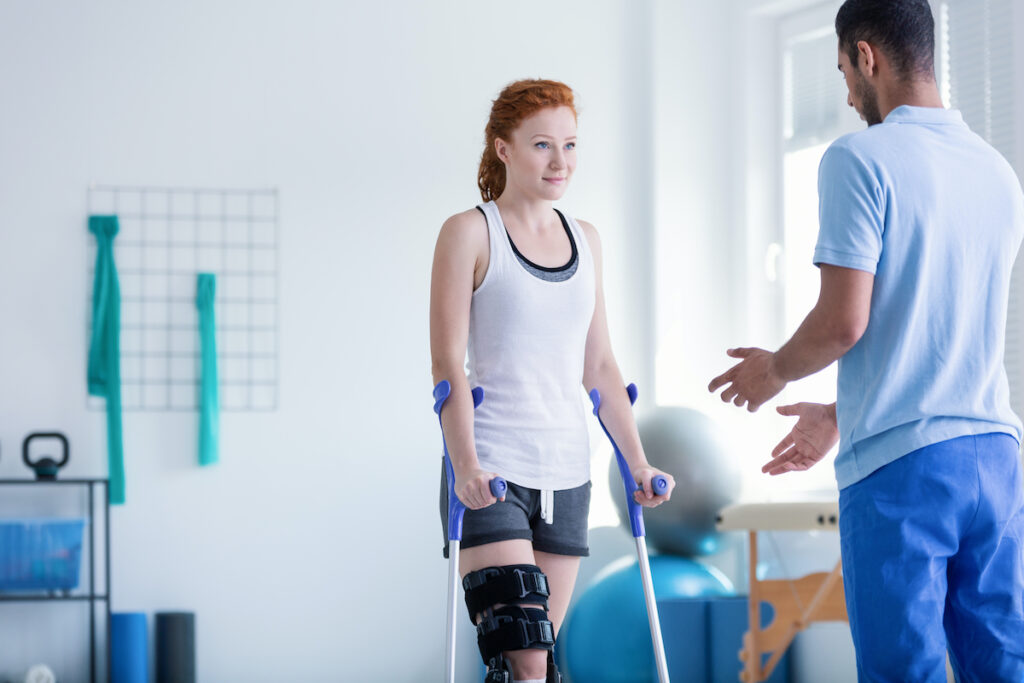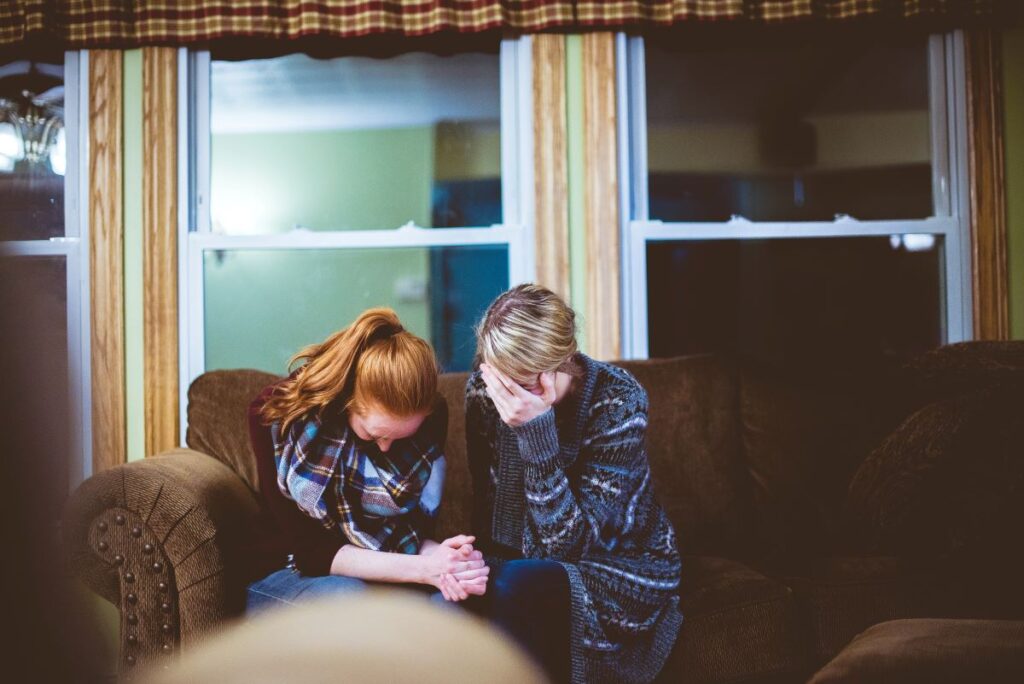
Individuals who experience a traumatic event, such as a car accident or fall injuries, will also experience the process of medical treatment and rehabilitation depending on the level of severity. This ranges from being transferred by an ambulance and visiting the emergency department to inpatient hospitalisation and rehabilitation (ten Duis et al., 2003). Research so far has indicated that patients who have been severely injured by various causes, will not only face physical problems (Clay et al., 2010), but also psychological (Mason et al., 2002; Hatch et al., 2018) and social (Nota et al., 2015; van der Sluis et al., 1998), including mental health distress (e.g. PTSD, depression, anxiety), work and relationship difficulties respectively.
We recognise that risk factors contributing to poor wellbeing in patients who have experienced an injury exist; but what more do we need to learn in order to improve their short-term and long-term care? The literature often either explores specifically the impact of one type of injury, such as traumatic brain injury or one traumatic event, such as serious car accident.
Visser and colleagues (2021) aim to provide readers with a ‘broader overview’ on recovery from various types of injury and understand in-depth patient’s experiences surrounding their trauma care, wellbeing and rehabilitation post-injury.

People who experience a traumatic event may also experience the process of medical treatment and rehabilitation, which is associated with physical, psychological and social outcomes.
Methods
The researchers conducted a series of face-to-face focus groups (N=6) with patients at ETZ Hospital in Tilburg at the Netherlands, who experienced an injury, were treated in the emergency department and were over 18 years old. People were excluded if they had experienced severe traumatic brain injury, dementia or did not speak or understand the Dutch language. The researchers accessed patient data from a data register and invited those eligible to participate in the study.
Participants were divided into groups based on their Injury Severity Score (ISS):
- Single injury or mild/moderate injuries
- Severe multiple injuries
- Mild or moderate traumatic brain injury
In addition, researchers gathered socio-demographic information from participants, including age, sex, marital status and educational level, and mental health difficulties including symptoms of PTSD, anxiety and depression through validated self-report questionnaires (IES-R and HADS).
The qualitative data were coded and analysed independently by two researchers, following a phenomenological approach.
Results
The focus groups lasted 60-90 minutes and 28 participants took part from the 135 who were invited (21%). The mean age of the sample was 58 years old and the majority of participants were males (71%) and reported no symptoms of anxiety (68%) or depression (70%).
The themes that emerged are outlined below by domain impacted.
Physical wellbeing
- Inability to communicate at the emergency room
- No recovery to pre-trauma function after the initial 12 months of rehabilitation
- Adaptation to physical limitations caused by the injury (e.g. pain, headache, or stiffness)
- Coping with the traumatic experience (e.g. desire for quick recovery)
- Effort to participate in activities
The physician said that my complaints would diminish over time. However, I still cannot walk well and I am in pain every day.
Psychological wellbeing
- Fear and anxiety, including fears of death during the injury event, worse physical outcomes due to severe injuries, lack of understanding around the cause of trauma, limited or no memory of what happened, nightmares, future perspective of life
- Feelings of helplessness during the A&E and around recovery
- Uncertainty about treatment and the future
- Processing trauma, including difficulties with accepting what happened, severity of injuries, realisation of survival, trust on positive outcomes and mental instability
- Coping mechanisms during rehabilitation including avoidance (e.g. avoiding driving a car if it was related with the injury), relapse to an old addiction (smoking/alcohol), feelings of revenge and anger
- Acute stress and PTSD symptoms experienced both during the hospital stay and rehabilitation period, including nightmares, flashbacks and re-experiencing the trauma
- Subjective personality changes, including levels of satisfaction with life and response shift
- Emotional, cognitive and behavioural changes
When I am sad, I see the white car approaching me and I re-experience the injury again.
Social wellbeing
- Impact on significant others and their wellbeing
- Difficulties in relationships
- Feeling dependent of care and loss of control
- Inadequate social support – this was mostly experienced by older adults who have lost their partners, including seeking help from neighbours or having no-one to support them
- Communication problems between:
- Care provider and patient, including lack of clarity about injury severity, treatment and future expectations
- Care provider and relatives – no updates on treatment
- Hospital and GP or authorities by not providing information
- Authorities and patient by not providing information
- Media attention and negative effect of incorrect information
- Practical problems including insurance and financial difficulties
When I got out of bed I was not able to walk. In a period of time, I have learned to walk again step by step with the support of others.

Participants spoke about injury affecting their physical, psychological and social wellbeing.
Conclusions
The findings of the study suggested that people who have experienced a traumatic injury may have to deal with various negative and positive outcomes during their hospital stay or rehabilitation period across multiple levels, such as physical health, psychological wellbeing and social welfare.

These findings show that people who experience a traumatic injury may face various outcomes (positive and negative) during their hospital stay or rehabilitation period.
Strengths and limitations
The study presented is the first to the authors’ knowledge which explores biopsychosocial difficulties among patients with traumatic injuries. The findings discussed above are important insights of people with lived experience and add to the literature significantly, as they highlight the need to improve trauma care and provide in advance information and/or educational materials by medical staff regarding the injuries, treatment and recovery. It strongly underlines the urgency of informed care and decision-making in relation to treatment and access to social and psychological support at emergency departments. I personally find the qualitative design a strength, as it allows in-depth exploration of feelings and thoughts related to trauma and recovery. Finally, the authors offered an overview of the quality-of-life post-injury among people with different levels of injuries, including mild, moderate and severe.
However, some limitations do exist, with the most important being the homogenous sample. Participants were mainly coming from a Caucasian background, as one of the eligibility criteria was fluency in the Dutch language. This is acknowledged by the researchers, but I think a replication of the study in UK settings would allow exploring these experiences in a more diverse and representative population. The authors also have stated the vulnerability of participants and the risk of being triggered by the focus group discussion, without disclosing how they would deal with their distress if that arises. Although I understand that typically details of safeguarding processes are not included in the papers, I think clarity on that would be valuable to the reader.

A replication of this study in UK settings would allow for exploration of these experiences with a more diverse and representative population.
Implications for practice
To me, a mental health professional with lived experience of a serious traumatic car accident, this read was both sad, relatable and alleviating. The majority of the experiences outlined in this piece of work resonate with me. The impact of a serious injury is not unfortunately short-term, but long-term and will be affecting the individual at different levels for years to come. From a personal perspective, the chronic physical pain (which never seems to go away) and the difficulty returning to a pre-injury state (no matter how hard you try) are the most difficult outcomes I have to deal with on a daily basis. In addition, this is usually associated with feelings of guilt because ‘I should feel lucky to be alive’.
Moreover, as one participant described:
The impact of my trauma is bigger for my family than for myself.
This thought makes the process even harder at times. I wouldn’t stand up as quickly as I did without significant others on my side, but the inner pressure was significantly high. It’s always you (the traumatised individual) who not only has to deal with your own endless pain, hospitalisation, dependency to others, hopelessness, sadness, fear of getting better and disturbing memories, but with your family’s pain as well. As if it wasn’t hard enough, now you have to do it with a smile on your face. This finding highlights the necessity of offering professional psychological support to parents, carers, partners, siblings; anyone who acts like the patient’s rock. The psychological pain and burden is real, and we should always reflect on how important the surrounding environment is to someone’s treatment. Psychoeducation and trauma-focused interventions should be put in place as part of an integrated care plan. As someone who was not offered psychological support at any point during hospitalisation, only to seek help years later, I would argue that more needs to be done as mental and physical health always go hand-in-hand.
I would urge researchers to conduct longitudinal studies and explore how these traumatic experiences may influence people long-term to offer the evidence-base for the implementation of prevention strategies and policy changes. Finally, it’s important to understand how these traumatic events may influence people coming from different ethnic and/or racial backgrounds, socio-economic and educational levels, with or without external support, and with or without pre-existing mental health difficulties. A UK multi-national sample would definitely allow group comparisons and identify at-risk groups. Lastly, given that people shared positive changes in relation to their trauma (behaviour and character), it would be equally important to understand from a qualitative perspective the concept of resilience and how these traumatic events could act as ‘life changing’.

“It’s always you (the traumatised individual) who not only has to deal with your own endless pain, hospitalisation, dependency to others, hopelessness, sadness, fear of getting better and disturbing memories, but with your family’s pain as well.”
Statement of interests
None.
Links
Primary paper
Visser E, Den Oudsten BL, Traa MJ, Gosens T, De Vries J (2021) Patients’ experiences and wellbeing after injury: A focus group study. PLoS ONE 16(1): e0245198.
Other references
Clay FJ, Newstead SV, Watson WL, Ozanne-Smith J, Guy J, McClure RJ. Bio-psychosocial determinants of persistent pain 6 months after non-life-threatening acute orthopaedic trauma. J Pain. 2010; 11: 420–430.
Hatch R, Young D, Barber V, Griffiths J, Harrison DA, Watkinson P. Anxiety, Depression and Post Traumatic Stress Disorder after critical illness: a UK-wide prospective cohort study. Crit Care. 2018; 22: 310- 018-2223-6.
Mason S, Wardrope J, Turpin G, Rowlands A. The psychological burden of injury: an 18 month prospective cohort study. Emerg Med J. 2002; 19: 400–404.
Nota SP, Bot AG, Ring D, Kloen P. Disability and depression after orthopaedic trauma. Injury. 2015; 46: 207–212.
ten Duis HJ, van der Werken C. Trauma care systems in The Netherlands. Injury. 2003; 34: 722–727.
van der Sluis CK, Eisma WH, Groothoff JW, ten Duis HJ. Long-term physical, psychological and social consequences of a fracture of the ankle. Injury. 1998; 29: 277–280.
Photo credits
- Photo by Kevin Paes on Unsplash
- Photo by Gareth Harrison on Unsplash
- Photo by DIEGO SANCHEZ on Unsplash
- Photo by Adhy Savala on Unsplash
- Photo by A Perry on Unsplash
- Photo by Ben White on Unsplash
- Photo by Nijwam Swargiary on Unsplash

Hi, my undergraduate dissertation was ‘Factors influencing an individual’s acceptance of a diagnosis of a chronic condition’ which although isn’t always the same as a traumatic injury, seems to reflect some of the same ideas as this study. Self-perception and feeling supported were two of the highest scoring factors for acceptance.
this was great. I’ve been having issues coping with a massive heart attack and 2 cardiac arrests in the same day, long term medical coma, 3 hospitals, and a messy recovery time. I also have MS, so go figure. I hope more research is forthcoming!